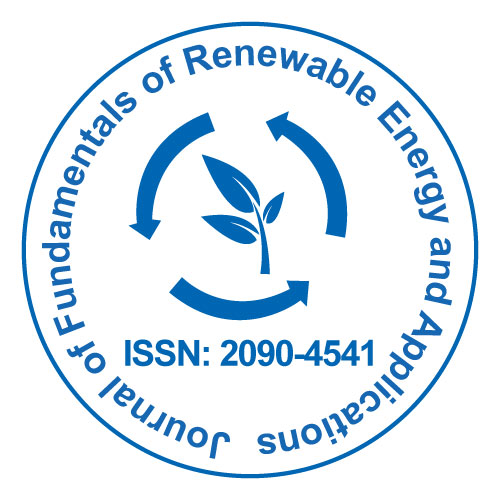
Journal of Fundamentals of Renewable Energy and Applications
Open Access
ISSN: 2090-4541

ISSN: 2090-4541
Commentary Article - (2022)Volume 12, Issue 3
Nuclear energy is the energy contained within an atom’s nucleus, or core. Atoms are the smallest units of matter in the universe, and energy is what holds the nucleus together. The dense nucleus of an atom contains a tremendous amount of energy. The force that holds the nucleus together is officially known as the “strong force.”
Nuclear energy can be used to generate electricity, but it must be liberated from the atom first. Atoms are separated to release energy during the nuclear fission process.
A nuclear reactor, also known as a power plant, is a collection of machines that can control nuclear fission to generate electricity. Pellets of the element uranium are used as fuel in nuclear reactors to produce nuclear fission. Uranium atoms are forced to disintegrate in a nuclear reactor. The atoms split, releasing tiny particles known as fission products. Fission products split other uranium atoms, triggering a chain reaction. Heat is produced by the energy released by this chain reaction.
The heat created by nuclear fission warms the reactor’s cooling agent. A cooling agent is usually water, but some nuclear reactors use liquid metal or molten salt. The cooling agent, heated by nuclear fission, produces steam. The steam turns turbines, or wheels turned by a flowing current. The turbines drive generators, or engines that create electricity.
Nuclear poison rods can control the amount of electricity produced. Nuclear poisons are materials that absorb some of the fission products produced by nuclear fission, such as a type of xenon. The greater the number of rods of nuclear poison present during the chain reaction, the slower and more controlled the reaction.
The removal of the rods allows for a stronger chain reaction and the generation of more electricity. Nuclear power plants generatev about 15% of the world’s electricity as of 2011. Although the United States has more than 100 reactors, it generates the majority of its electricity from fossil fuels and hydroelectric energy. Nuclear power plants generate nearly all of the electricity in countries such as Lithuania, France, and Slovakia.
Uranium is the most commonly used fuel in the production of nuclear energy. This is due to the ease with which uranium atoms split apart. Uranium is also a prominent element that can be observed in rocks all over the world. However, the special type of uranium used to generate nuclear energy, known as U-235, is extremely rare. U-235 accounts for less than 1% of all uranium in the world.
Although some uranium is mined in the United States, the vast majority is imported. Australia, Canada, Kazakhstan, Russia, and Uzbekistan supply uranium to the United States. Uranium must be extracted from other minerals after it has been mined. Before it can be used, it must also be processed.
Because nuclear fuel can be used to make nuclear weapons as well as nuclear reactors, only countries that are signatories to the Nuclear Non-Proliferation Treaty (NPT) are permitted to import uranium or plutonium, another type of nuclear fuel. The treaty promotes nuclear energy for peaceful purposes while also limiting the spread of nuclear weapons.
Every year, a typical nuclear reactor consumes approximately 200 tonnes of uranium. Some uranium and plutonium can be re- enriched or recycled thanks to complex processes. This reduces the amount of mining, extraction, and processing required.
Nuclear energy generates electricity, which can be power houses, schools, businesses, and hospitals. Building nuclear reactors necessitates advanced technology, and only countries that have signed the Nuclear Non-Proliferation treaty can obtain the necessary uranium or plutonium. For these reasons, the majority of nuclear power plants are located in developed countries.
Citation: Ruff A (2022) The Role of Nuclear Energy in Power Generation as a Renewable Energy Resource. J Fundam Renewable Energy Appl. 12:294.
Received: 03-Aug-2022, Manuscript No. JFRA-22-19685; Editor assigned: 05-Aug-2022, Pre QC No. JFRA-22-19685 (PQ); Reviewed: 19-Aug-2022, QC No. JFRA-22-19685; Revised: 26-Aug-2022, Manuscript No. JFRA-22-19685(R); Published: 02-Sep-2022 , DOI: 10.35248/2090-4541.22.12.293
Copyright: © 2022 Ruff A. This is an open-access article distributed under the terms of the Creative Commons Attribution License, which permits unrestricted use, distribution, and reproduction in any medium, provided the original author and source are credited.